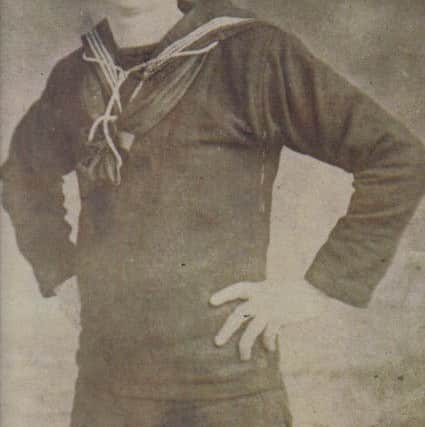How a 10-year project to honour South Tyneside's First World War fallen began


As Peter explains “this one photograph of one man from the Tyne Dock area began my 10-year personal odyssey to tell the tale of as many men, as possible, from South Tyneside who had actively participated in The Great War”.
“His story is a microcosm of that of the thousands of local lads (and lasses) who gave their all for king and country and who we’ve been commemorating during our centenary commemorations of late,” explains Peter.


Advertisement
Hide AdAdvertisement
Hide AdJim Hoy enlisted at HMS Satellite in North Shields on September 14 1914.
“Whether he expected to serve at sea or as, effectively, an infantryman in Winston Churchill’s own private ‘Army’ can never be known but after completing his initial training at the Crystal Palace he moved to the Royal Naval Division’s (RND) permanent camp at Blandford, in Dorset.
“He set sail from Avonmouth on March 1, 1915, and eventually arrived in Egypt on March 26.
On April 25 the RND performed a diversionary ‘attack’ at Bulair on the west coast of the Gallipoli peninsula, while battalions of the 29th Division of the Regular Army launched their amphibious attacks at V and W Beaches at Cape Helles.”
Advertisement
Hide AdAdvertisement
Hide AdAfter three months of achieving little success on the Helles front and, with their advance stalled, it was decided that a new front should be opened up on August 7.
However, it was decided to launch one last “catastrophic” all-out attack on the existing well-established Turkish front lines.
On the second day of the offensive, three much-reduced “battalions” of the RND, decimated by dysentery, typhoid and various other diseases, were instructed to lead the attack.
“This difficult task was given to battalions which had recently been described as unfit for offensive operations because of the pounding they had taken since May and widespread sickness.
Advertisement
Hide AdAdvertisement
Hide Ad“To compound matters, insufficient time was allowed for orders to be distributed and for the troops to be deployed for the attack: the order to take the trenches was only passed to the attacking battalions at 4.15pm, 15 minutes before the assault was due.
“Consequently, at 4.30pm the artillery barrage was lifted but it wasn’t until 5pm that two of the battalions were ready to execute their attack. The third battalion didn’t complete preparations in time and, wisely, remained in their trenches.
“One of the battalion’s attack was launched late and effectively ‘blind’.
“AB Albert Wilson, a survivor of the attack, recorded in his diary that their orders were ‘to charge, jump three trenches and occupy the fourth.’
Advertisement
Hide AdAdvertisement
Hide Ad“The men advanced through a very heavy Turkish shrapnel curtain, accurately aimed by the spotters on Achi Baba.”
But there was no fourth trench to occupy.
“It was a mere two-foot deep scrape in the ground that had been wrongly interpreted by the Royal Flying Corps as a fourth ‘trench’ a few days before.
“Thus the men were doomed to charge looking for an elusive, non-existent trench and, having successfully negotiated the first three trenches, advanced well beyond the presumed location of this ‘trench’, and were forced to retire in the face of a withering artillery barrage – having understandably failed in their objective.
“Ninety-nine men (including Peter’s great uncle) lost their lives in the space of a maximum of half an hour in this unquestionable shambles, among them two other South Shields’ men: Thomas (Tot) Pinkney and Joseph Brown – the former being a former Harton Colliery putter like James Hoy.
Advertisement
Hide AdAdvertisement
Hide Ad“The losses in the action of Achi Baba Nullah were disastrous.
“One of the battalions had lost their CO, Lieutenant-Colonel Edmund Evelegh, and seven other officers killed, five of whom were sub-lieutenant Platoon Commanders.
“Fourteen officers and 273 other ranks were listed as ‘casualties’ in the battalion’s war diary for July 13 1915, the battalion’s worst day at Gallipoli.
“On that day alone, from five o’clock, 92 officers and men of are recorded as having lost their lives, their names being all recorded on the Helles Memorial as none of these men have known graves.
Advertisement
Hide AdAdvertisement
Hide Ad“Thereafter, that battalion and all the other battalions of the Royal Naval Division played no further part in offensive operations on the peninsula, their job henceforth being restricted to holding the line.
“I had a memorial plaque made which I placed in Skew Bridge Cemetery (an area James Hoy would have known well) during my recent visit – and where many of his mates lie buried.
“I hope this will stand as a fitting tribute to both him and the other brave men of the RND who carried ‘bright back to the coiner the mintage of man’ (A.E. Housman),” added Peter.